As Name implies you can find rainforest cactus in rainforests. They are somewhat different to the cactus you normally find in the deserts. Majority of these rainforest cactus do not carry any spines. In fact, the majority of these jungle cacti are epiphytes and they grow in well aerated places.
Hence when you plant them make sure that you provide proper aeration and an excellent drainage.
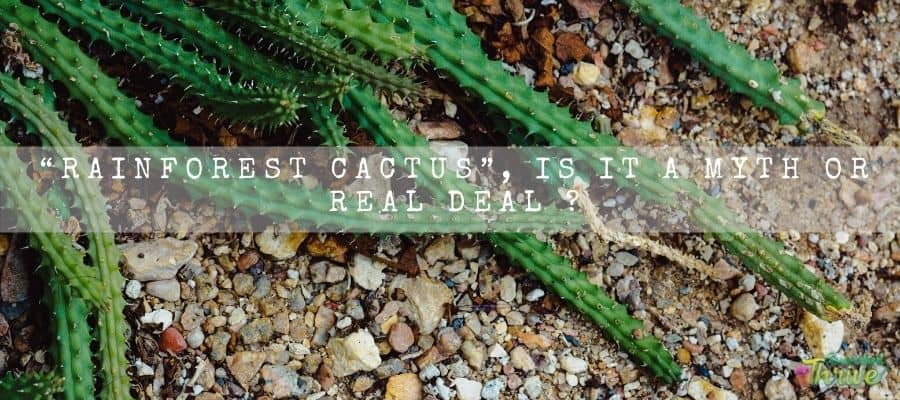
Hence, you can consider adding elements such as large coconut husk chunks to mimic those conditions when you cultivate them. If you wish to feed them, you can feed them with slow-release fertilizers.
Jungle cacti do not prefer to be in drought conditions. Instead, you need to keep them moist. Usually, you can water them once a week to make them thrive well.
I will be covering how you should take care of them in this article. if you are eager to learn about them, keep reading this article.
Types of rainforest cactus.
Acnthocereus
Acnthocereus is a cacti genus which usually forms in shrubs. Further they will grow in an arching manner and their stems could also rise to several meters.
You could commonly spot them in tropical parts of America, particularly in regions such as in Florida, Columbia and in Caribbean islands.
They have inherited the Acantha name from the Greek language and it refers to the spine. In Latin terms, cereus refers to candles.
For example, we can consider the plant, Acanthocereus tetragonus. ( Fairy castle cactus) to elaborate further on the Acnthocereus genus.
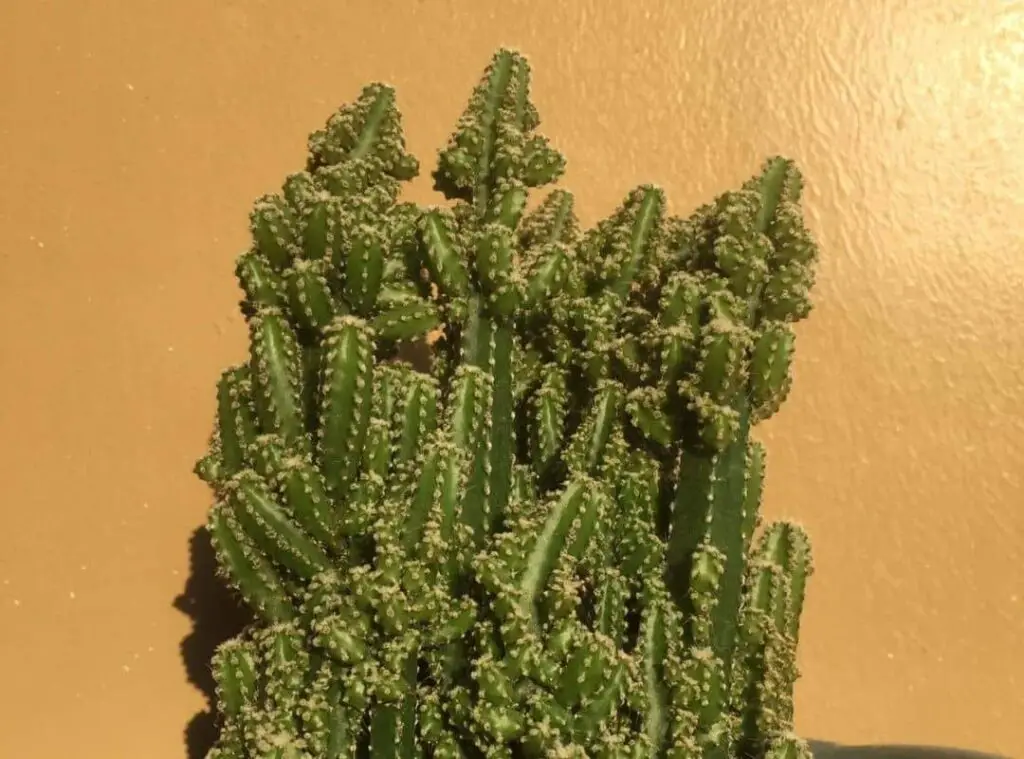
Acanthocereus tetragonus (Fairy castle cactus).
This is a miniature columnar cactus, and it forms plenty of branches in green. When they mature, their branches grow in clumps, and they form vertically.
That resembles a formation of a fairy castle. Fairy castle cactus stems carry short white spines, and they further consist of ribs as well.
They would be handy picks for indoor gardening as well. However, it is somewhat rare to spot them blooming and the ones which bloom also need to be at least a few years matured to do so. When they flower, you expect them to flower with white- or yellow-colored flowers.
Disocactus
You could find this especially in Central America , Southern America .It is an epiphytic cactus too. They prefer to grow in tropical regions , especially on trees as epiphytes or on rocky areas as lithophytes.
They have inherited the name called dis from the Greek language and it means two. This literally means both inner and outer flower segments are in the same length.
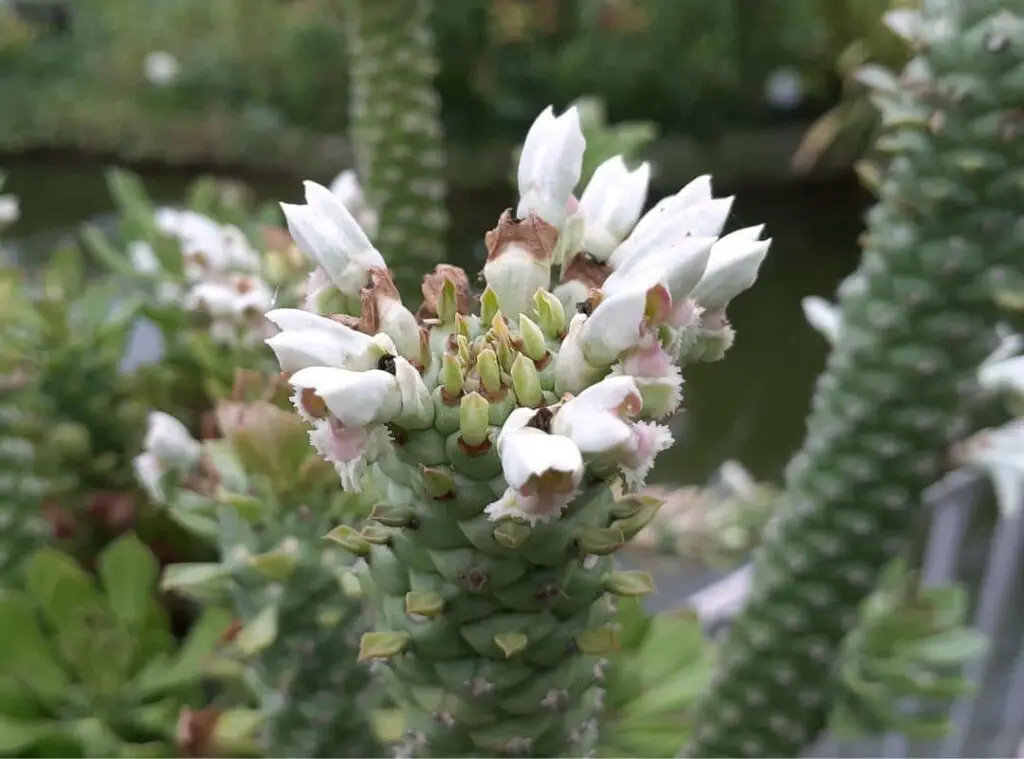
Disocactus x mallisonii ( Rat Tail cactus)
Rat tail cactus produce stems which tend to look like pendants and the prominent color of them would be green. They would further carry brown spines as well.
Rat tail cactus produce funnel shaped blooms in bright pink or in red. Besides they would carry white stamens as well.
Epiphyllum
Epiphyllums are native to central America. To explain their name, epi literally means, on or upon as per Greek terms. Besides phylum means the leaf as per Greek terms.
Orchid cacti and leaf cacti are a couple of common names which you may use for the Epiphyllum plants. We could consider the Epiphyllum anguliger plants for this.
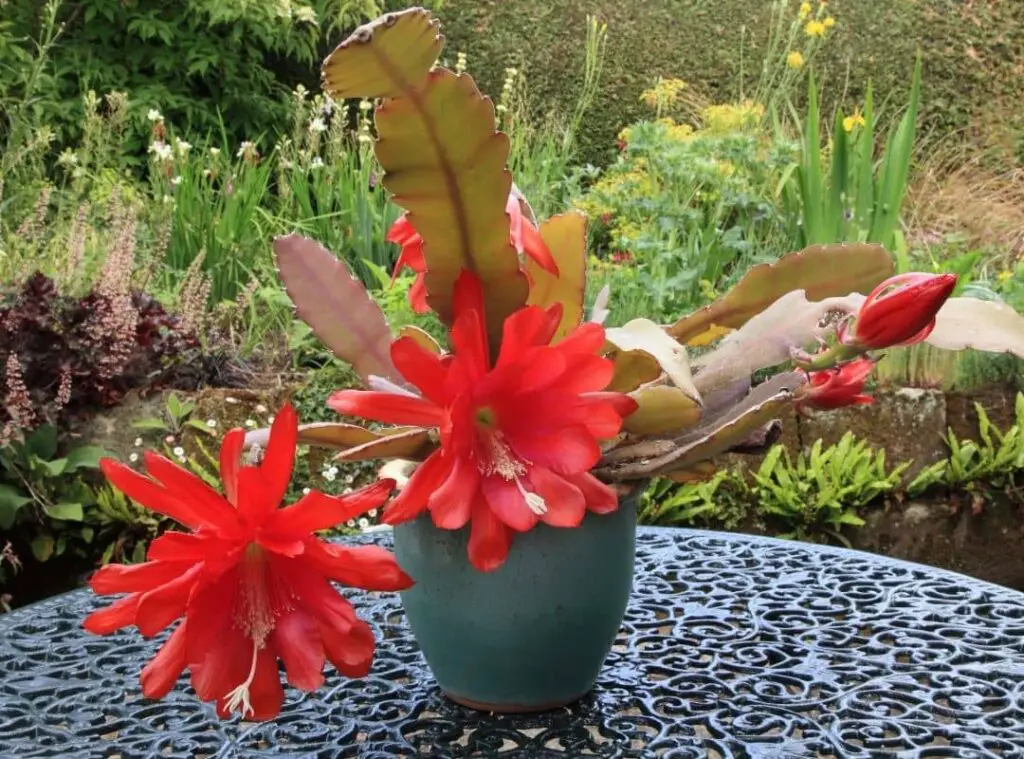
Epiphyllum anguliger
It is somewhat rare to spot the Epiphyllum anguliger grown in cultivation.
Fish bone cactus is the common name of these plants and they have inherited this common name due to its appealing flattened appearance of their stems and due to their deeply toothed stems as well . They produce scented flowers too. Epiphyllum anguliger are native plants in Mexico.
Hatiora
Hatiora is a small genus which comprises the epiphytic cactus, and they belong to the tribe Rhipsalideae and to family cactaceae.
You may use the majority of the Hatiora species as ornamental plants. These plants go by the common names called easter cactus and Whitsun cactus. For example, we can consider Hatiora epiphylloides.
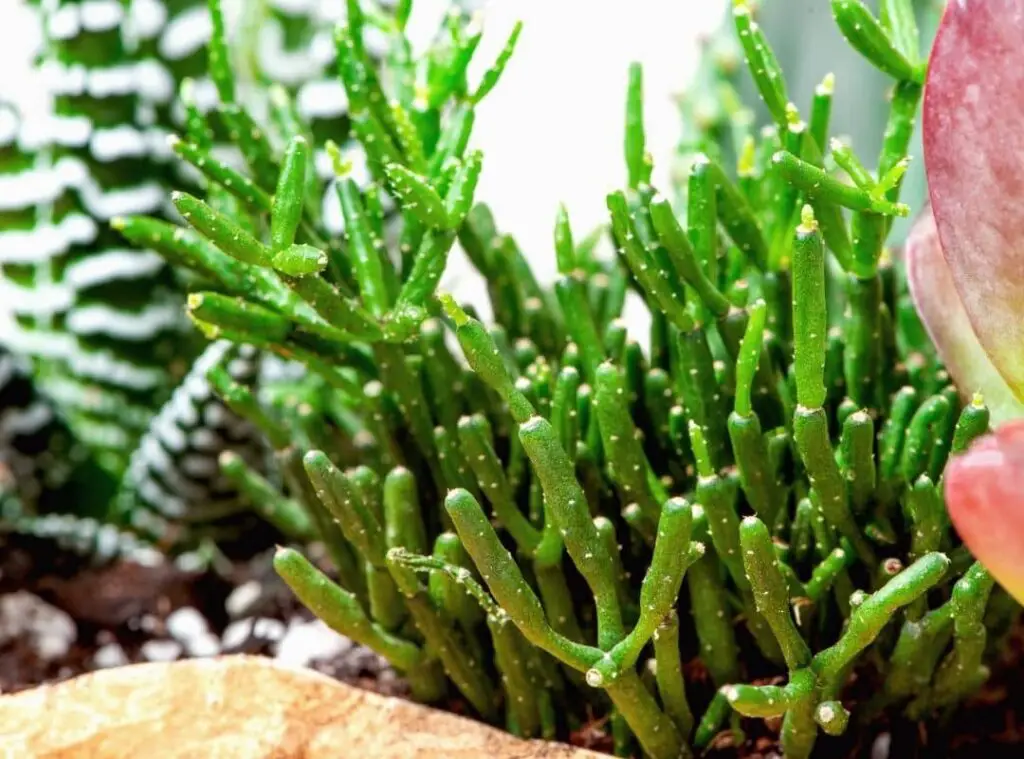
Hatiora epiphylloides
Hatiora epiphylloides is a shrub epiphytic plant where they produce pendant shaped segmented branches. They grow spineless and consist of small areolas. Hatiora epiphylloide produces flowers in yellow.
Hylocereus
Hylocereus are commonly found in central America and in Mexico. There are some Hylocereus species which produce larger edible fruits.
You could call them dragon fruits or pitahayas. They have also inherited their name from the Greek language.
Literally hyle means forest in Greek terms. To elaborate further on this, we can consider Hylocereus trigonous (strawberry pair).
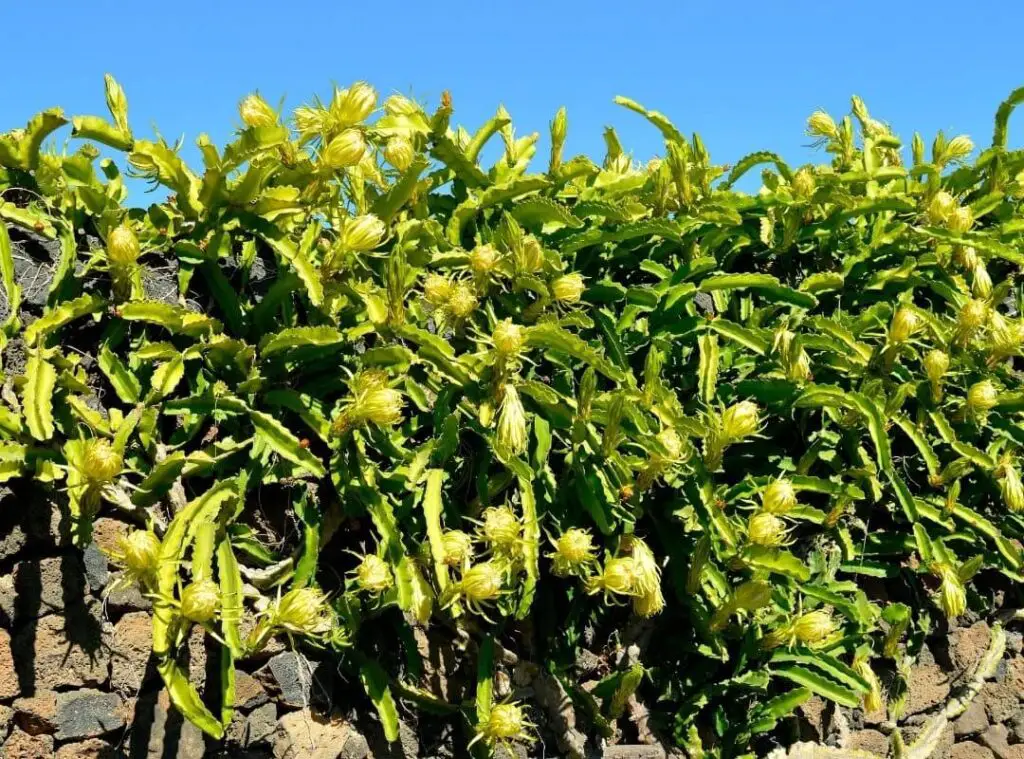
Hylocereus trigonous ( strawberry pair )
Hylocereus trigonous is a sprawling vining plant, and it is an epiphytic cactus too. They have fleshy green stems and 3 – 4 prominent longitudinal ribs as well.
They also produce fragrant flowers. Moreover, Hylocereus trigonous form a fruit type too and you could spot them in pink, purple.
Lepismium
The Lepismium genus also comprises many epiphytic plants. You could commonly find them in tropical parts of South America. For example, we can learn about Snowdrop cactus under this.
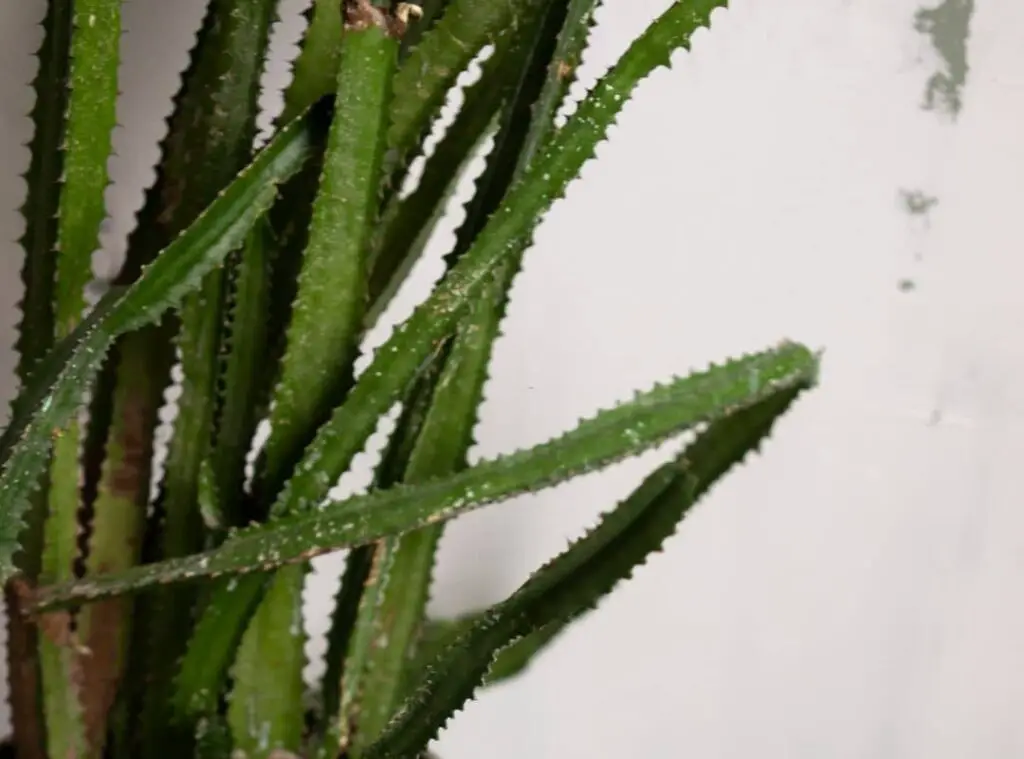
Lepismium houlletianum (Snowdrop cactus)
Snowdrop cactus come up with flattened stems. Besides, they produce flowers in creamy yellow color.
Moreover those flowers would be funnel shaped. Snowdrop cactus will form on the stem edges and they can produce flowers many times as well. Further chances are that you could spot them transforming those flowers into fruits as well. They would be either red or black .
Rhipsalis
Rhipsalis is yet another epiphytic plant type which is commonly called as Mistletoe cacti.
You could commonly spt them growing in Brazil. These plants have also inherited the name from the Greek language. We can consider the Rhipsalis teres plant under this.
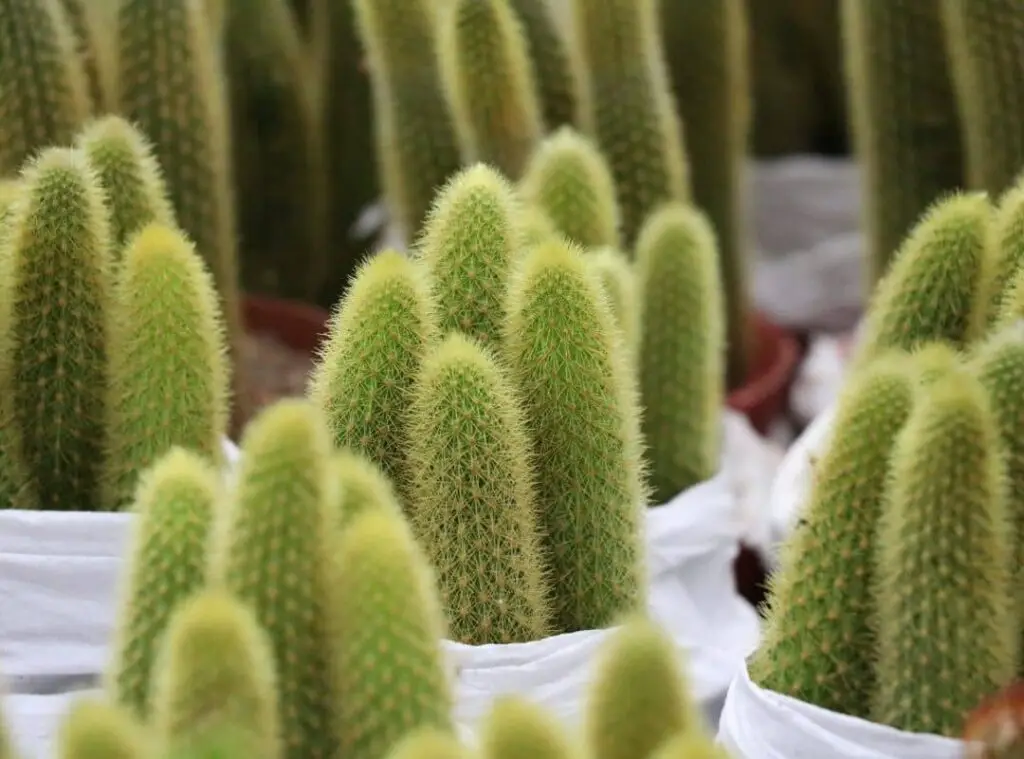
Rhipsalis teres
Rhipsalis teres plants develop branches which are thin and cylindrical in shape.
Moreover, their color would be green. Those branches will form in a cascading manner. Rhipsalis trees flowers would be white and later on they would transform into white berries.
Schlumbergera
Schlumbergera consists of only six species of cacti, and you will come across these plants mainly in southeast Brazil. Many species of the Schlumbergera consist of stems which look like leaf-like pads.
Flowers will form on areolas at the stem joints and on the tips. They have got this name for the commemoration of a famous cacti collector called Fredric Schlumberger. We can consider a famous Schlumbergera species called Schlumbergera ‘Bridgeport under this category.
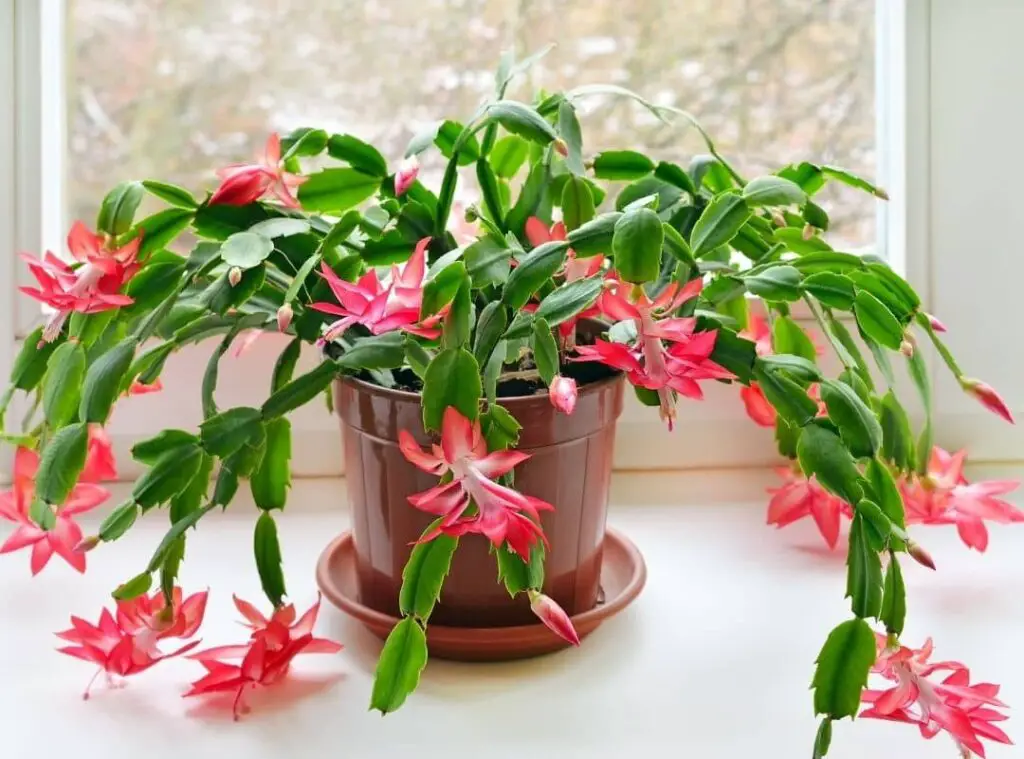
Schlumbergera ‘Bridgeport’
Schlumbergera ‘Bridgeport’ produces fabulous white flowers and they are quite famous for that characteristic.
They come up with large, rounded petals that make them look like a larger flower. They would tend to take a pink shade in their flowers given that they get the perfect temperature levels.
Selenicereus
You can commonly spot the Selenicereus plants forming in Mexico, Central America and in South America.
You could call them moonlight cactus commonly. Besides, they are known as night blooming cereus as well. They consist of about 20 cacti species.
These are also quite famous for their large white flower blossoming. Besides, they are scented flowers too.
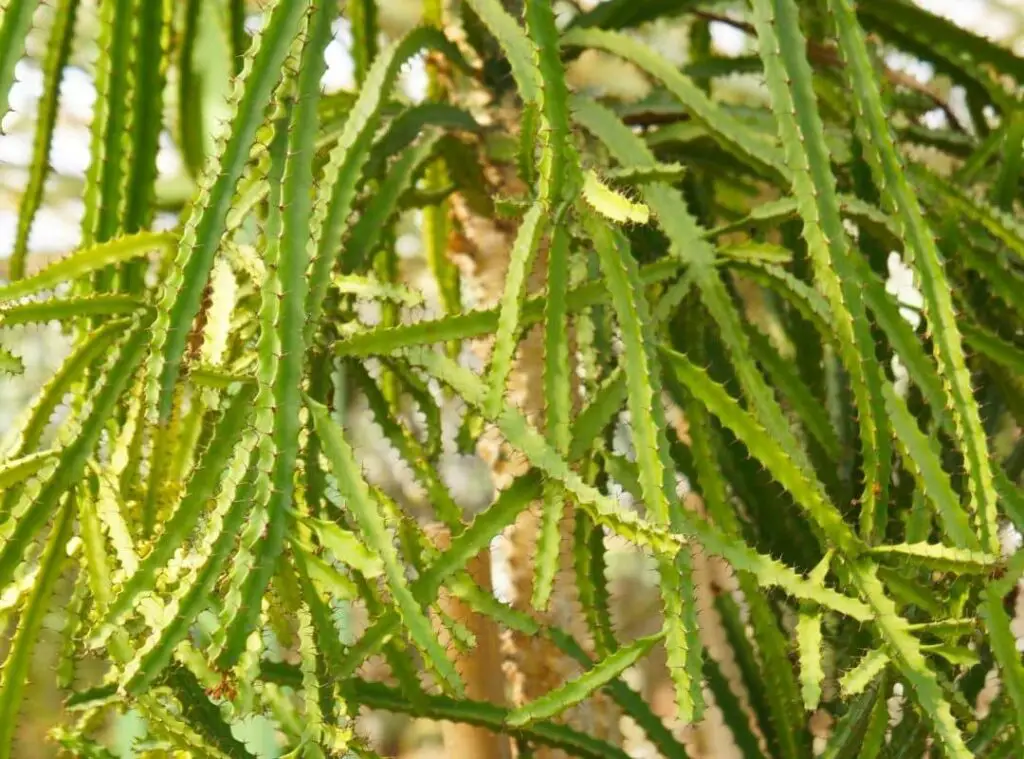
Selenicereus anthonyanus
Selenicereus anthonyanus are bright green in color and tend to form in a zigzag shape. This is a slow growing epiphytic plant.
Pseudorhipsalis ramulosa
The common name of Pseudorhipsalis ramulosa is red Rhipsalis and they produce pendulous stems which will be flattened from both sides.
When you expose them to bright sunlight, they will become vivid red in color. In fact, these are called lucky festive plants for the Lunar new year.
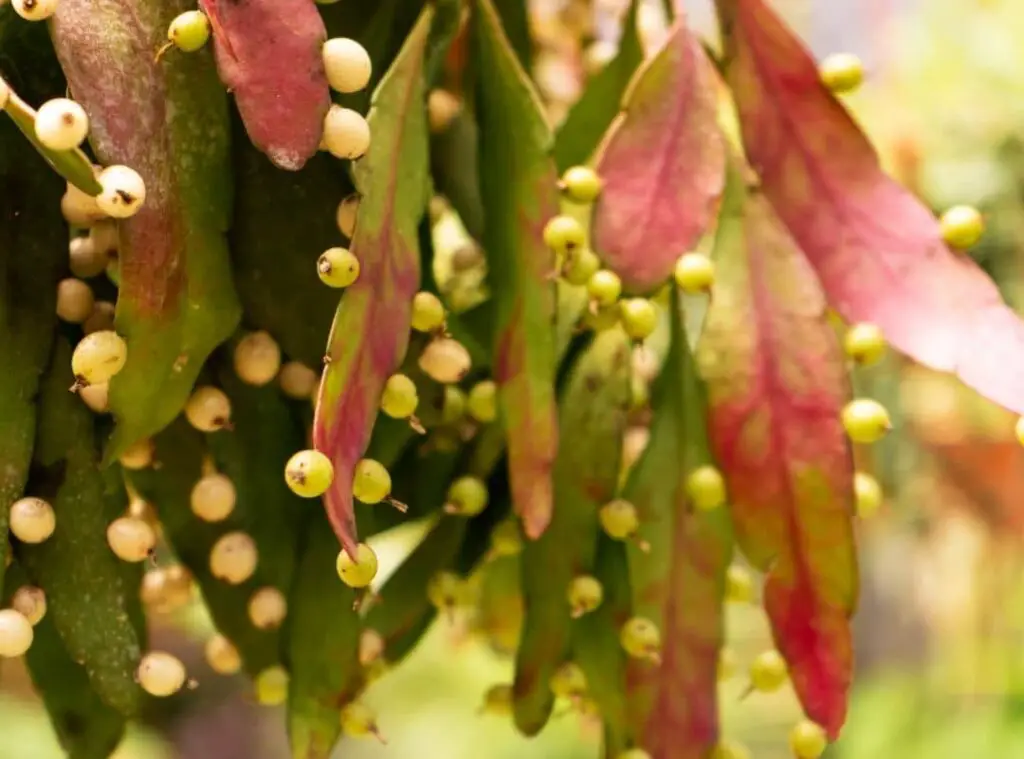
How do you take care of a forest cactus?
Sunlight
When the jungle cacti grow in their natural habitat, they usually grow in filtered sunlight.
They would perform well with a medium source of sunlight right throughout the year and if you leave them exposed to harsh intense sunlight for too long, it will make the plants die. Best is to provide them morning full sunlight.
You can be tactful in rotating the plants to let them absorb the sunlight evenly. However, it is not something compulsory you need to do.
There could be certain jungle cacti where they want bright sunlight for extended periods which will allow them to produce flowers.
On the other hand, there could also be some cacti where they want a dark period to stimulate the flower blossoming. Hence, the sunlight requirement depends on each jungle cacti species.
Watering
You can water these plants quite frequently during spring and summer. I recommend keeping their soil moist and not too soggy or damp.
You need to water them in such a way where you adjust it according to the weather. Minimise watering them when they are ready to flower. Besides, always let their topsoil layer wither between two watering sessions.
When I say the top layer, it should be the top ½ inch layer of the soil. When they complete flowering, you need to water these plants’ soil to keep them moist for about one and half months’ time.
Never over water them. If you ever spot your jungle cactus has turned yellow , it is an inducement to let you know that you have provided them with water in abundance, and it has resulted in the rupture of the cellular structure.
Temperature
Warmer temperatures would go well with the jungle cactus right throughout the year.
However, there could be some cacti which require a resting cooling period after they produce flowers so that they can set their buds to bloom once again. They do not prefer to go through a long winter rest with cooler temperatures like the desert cacti though.
You need to expose them to temperatures below 65 degrees Fahrenheit to stimulate the flowering.
You need to do that right after they complete flowering and leave them that way for about two months so that they can produce flower buds for the next flowering session.
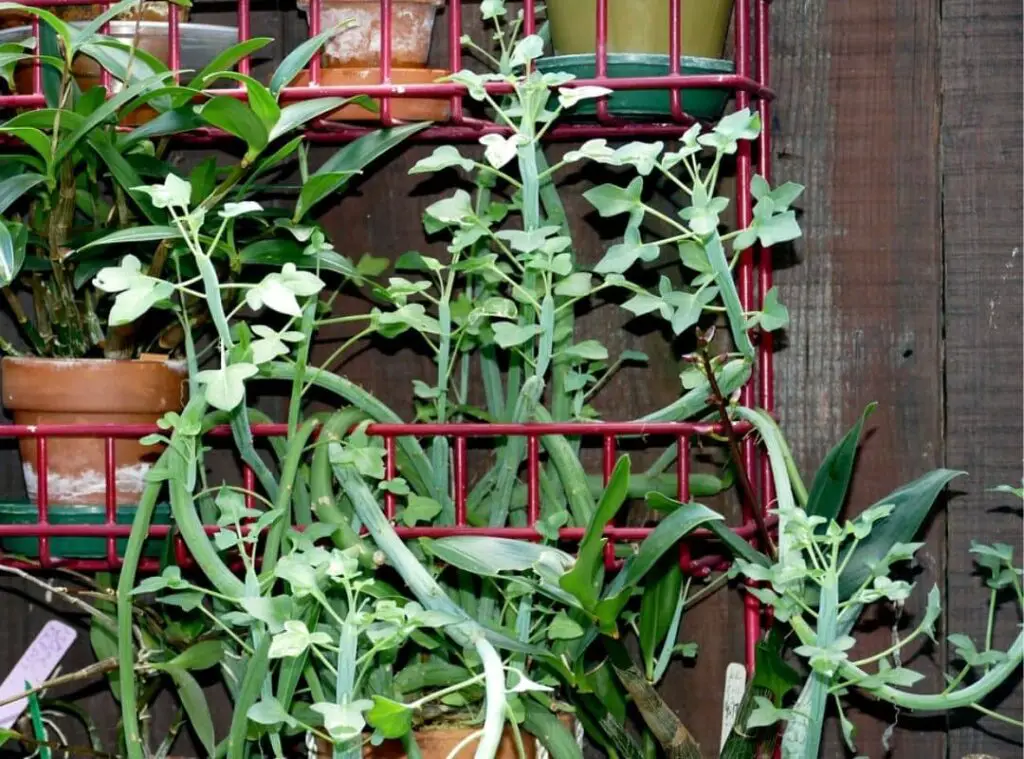
Soil
You need to grow them in a rich soil mix which is fast draining. You should refrain from using commercially made cactus soil mix as there will be a major component of peat included in that.
As a result , they retain more moisture than these plants require. I suggest you use a blend of one part each of potting soil, peat, coarse orchid bark.
When you add perlite, it will fasten the draining of the potting medium. If you grow them in the wrong soil mix , it will not create any bad impact on the growth of the jungle cactus at the star, but, as they grow it will badly impact on them as it will create diseases such as root rot.
I recommend repotting these plants once a year so that the growth of the jungle cacti will be benefited from that.
When you repot, you may go ahead with the same pot as initially but use a fresh well-draining soil mix. Moreover, you may consider pruning the plants to make them look neat and pleasant in appearance.
Fertilizer
I suggest you use a tomato type fertilizer to feed the jungle cacti. Consider applying fertilizers when they are about to form their flower buds.
Best is to feed them fortnightly during the flowering period. Never use fertilizers which are high in Nitrogen components.
Recent question
Are there succulents in the rainforest?
However, they would look different to the desert cacti though. When they grow in their natural habitats, they will get humid , jungle conditions.
How often do you water a jungle cactus?
Ideally you need to water them once every 10 days during spring and summer.. However, no matter how frequently you water them, you should make their soil moist and not soggy. Furthermore, you need to minimize watering the jungle cacti plants when they start to flower.
Read Next : Succulent In The Rain Gutter or Unfamiliar Gutter Gardening
